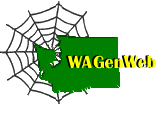Pioneer life in the Benton Co. WA area
Ponies Popular With Children/Many Names Had to be Learned
By BURTON 0. LUM
Tri-City Pioneer
Tri-City Herald, Sunday, 19 November 1961
The pioneer children rode their ponies bareback. The only riding equipment used was a light leather bridle with a curb bit. The reins were always tied together so that they would stay over the ponies neck. The ponies were trained to lower their heads to be bridled. In the summertime when the children were barefoot, they would put the bridle reins over the ponies’ necks, place their left big toes on the left knees of the pony, make a hop up, catch the ponies’ manes and pull themselves on.
When they wore shoes, they led the ponies alongside of something and crawled from it to the ponies’ backs.
Desiring to dismount, they drew up on the reins, stopped the ponies, took the reins in their hands and slid down the forelegs of the ponies being careful to keep their feet a safe distance from the front hooves, thus avoiding being stepped on.
When the children became older and large enough to saddle a mount, they secured children’s saddles. In the Tri-City area children’s saddles were very scarce.
I remember my first saddle. I traded two gallons of sorghum to Henry Beach for his old saddle. It was in a poor state of repair. The leather was all worn off the pommel. I repaired this by shrinking a pigs bladder over it. The cinch was worn out but the old cinch rings were intact. A new cinch was made from an old piece of canvas. The latigos were gone.
Father gave me an old pair of driving reins to cut up and use for latigos. The stirrups did not match. One was a fine leather-bound stirrup, the other a heavy wooden stirrup. The stirrup straps were without sudaderos, or the leather shields over the stirrup straps that protected the inside of the leg. Leather strings were cut out of old leather boot tops. These leather strings were fastened to the saddle to tie things on the saddle. I rode this saddle for thousands of miles and finally got stirrups that matched and new sudaderos.
The boys and girls saddles were not built rugged enough to do any roping. The pommel or horn was only used to hold onto or to tie things to.
Some children’s saddles were made with slot handholds cut in the back of the cantle for the children who rode behind to hold onto.
Every young pioneer boy could tell you the different names of each of the 16 parts of the buckeroo’s saddle as quickly as a sailor could box a compass. Most every pioneer boy and girl could recognize any of the 19 parts of the single harness and most of the 30 parts of the double harness. They could recognize and name most of the many parts of a buggy from the front dash to rear hubcap. They knew the lumber wagon by heart. They could tell you what the neck yoke, tongue, front and rear hounds, stay chains, break blocks, reach, singletrees, doubletrees, king pin, front and rear axel, hub wrench, wagon bed, spring seat, front and rear end gates. They knew them all. They also knew all the different makes of wagons. At a glance they could tell whether it was a Studebaker Rushford, Bain Molene or other make of wagon. If it had a homemade California bed they could tell you the make of the running gear on which it was built.
These pioneer children had much to learn. They were required to know the names and uses of all implements such as scythes. sickles, hand axes, hatchets,, sledgehammers, wedges, crosscut saws, garden hoes, grub hoes, mattocks, pickaxes, long-handled shovels6 short-handled shovels, long-handled spades, short handle spades, short-handled scoops, pitchforks, manure forks, potato forks, garden rakes and wooden rakes. They also knew the parts of the walking plow, beam handles, landside, shear, mouldboard and sod disk. They knew the spike and disk harrow, the two-wheeled, horse-drawn, dump hay rake and the horse-drawn mowing machine.
They had a very busy life. The country was undeveloped and new. Everyone had to help in order to get food and clothing. ‘There was no time for youthful delinquency.
Return to Index of Burton Lum Articles

